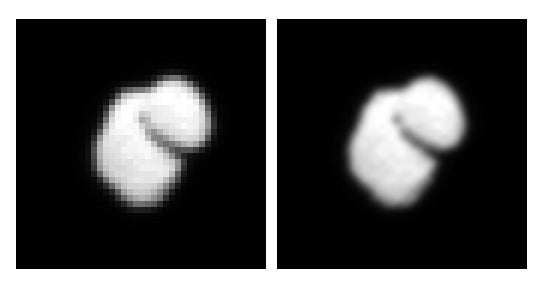Images of Comet 67P’s cliffs taken with the European Space Agency’s Rosetta spacecraft show a heated and cracked surface with long linear features. This material looks sintered — compacted by heating ice without melting it — by bonds among these aggregates, perhaps strengthened by organic compounds. The thermal processing causes cliff collapses, as seen at various places on 67P, and can release single boulders that follow the gravitational downslope and come to rest. In one particular place — the Hapi region between the small and big lobe of Comet 67P — the boulders seem to form a line by the gravitational attraction from both lobes.
Boulders also might be moved in eruptions when subsurface gas pressure is released. Such explosions can likely push house-sized boulders basically to any place on the surface.
Head of Rosetta’s OSIRIS instrument
Max Planck Institute
Göttingen, Germany










